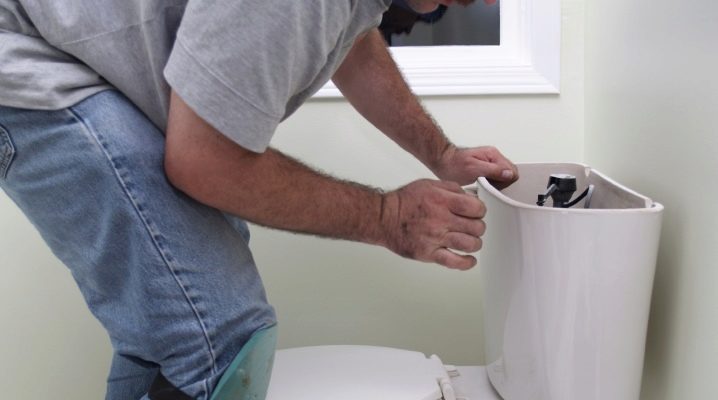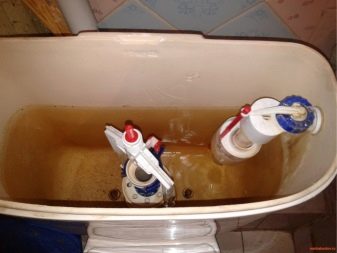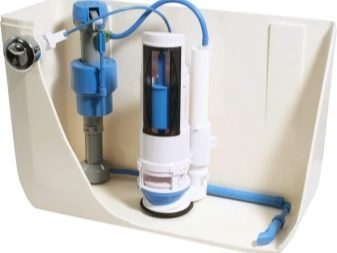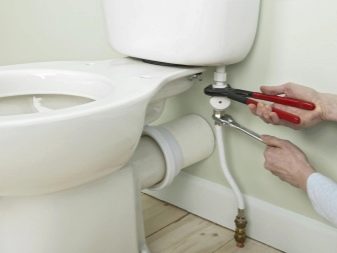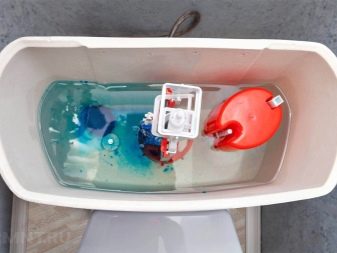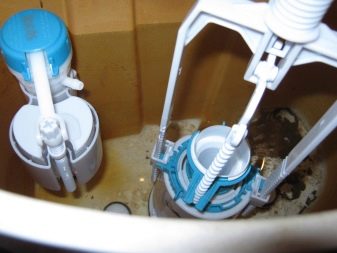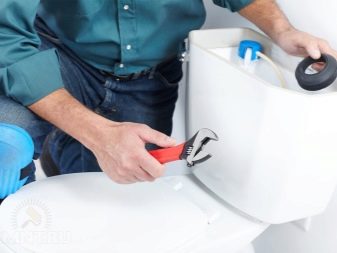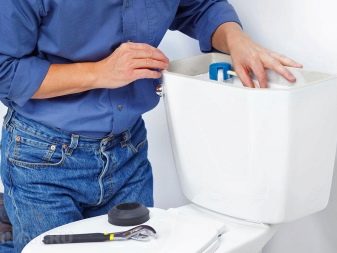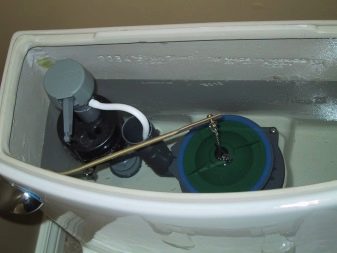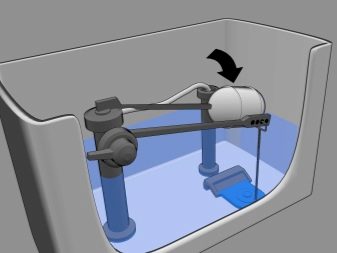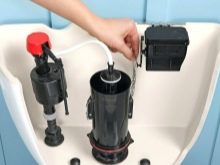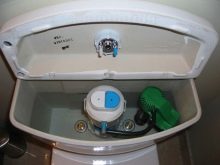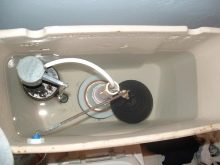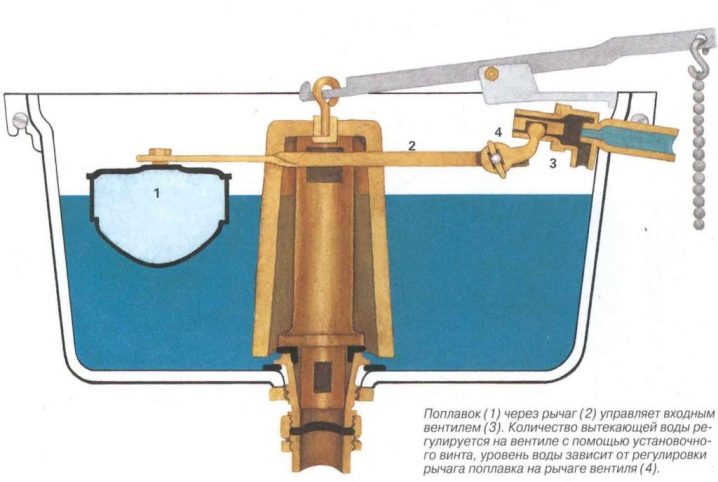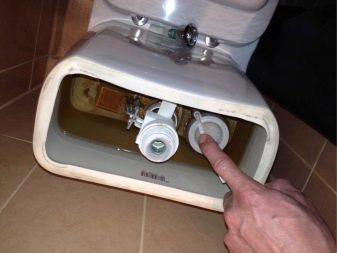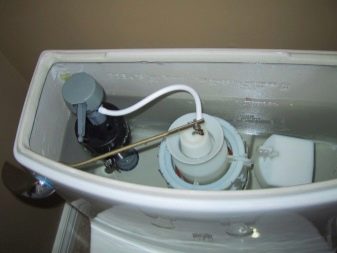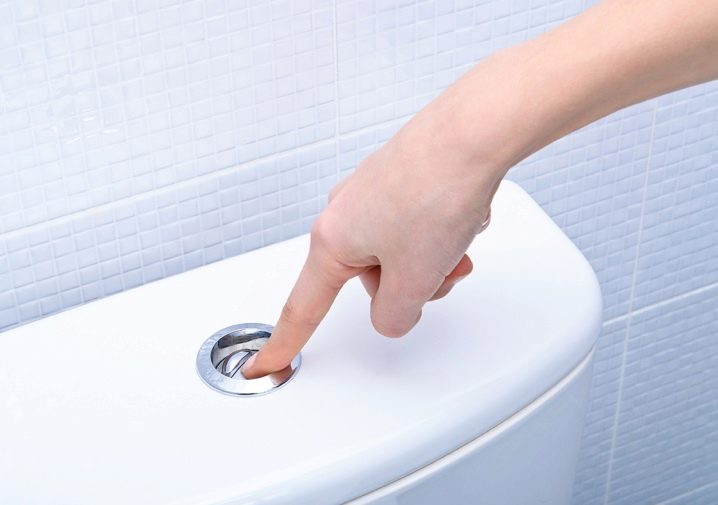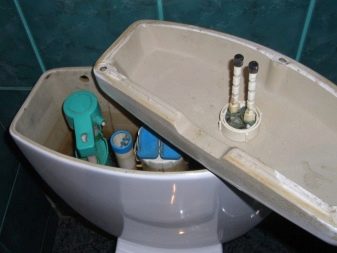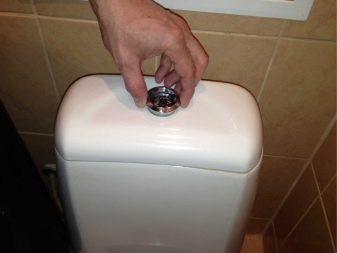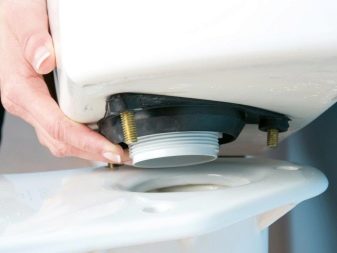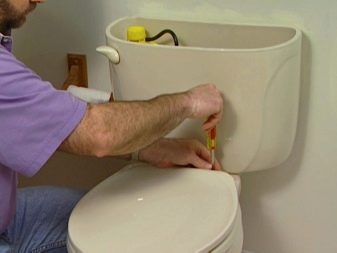Conditions for the smooth operation of the valve toilet cistern: troubleshooting
Plumbing in the house is characterized by the complexity of the repair. And the bathroom with all accessories is no exception. But there will be no problems if you know the device and the causes of problems with the toilet. To know - it is almost half the battle on the path to skill.
The design of the toilet
Structurally, the standard toilet consists of two main parts: the drain (flush) tank and bowl. These parts are containers, the first of which is used for the accumulation of water, its preservation and discharge into the bowl, and the second is connected to the sewer riser, where the contents of the bowl are washed away.
In modern types of bowls there are the following elements:
- the bowl itself with mounting bolts;
- release device;
- plastic seat with cover included.
Bowls for installation in apartments are cast from porcelain or earthenware. In non-residential buildings install plastic and metal products. In old houses there are still cast-iron toilets, but it is unlikely to be found on sale.
The outlet from the bowl is arranged with the outlet bend upwards so that there is always water at the beginning of the bend. An odor trap is formed that prevents unpleasant odors from entering the toilet sewer inside the toilet.
There are two groups of toilet bowls on the design of the outlet:
- horizontal release when the direction of the nozzle is parallel or at a slight angle down to the floor surface;
- with a vertical outlet, in which the nozzle is directed vertically downwards.
The second distribution option in Russia was not received due to standard projects of sewage devices in residential apartment buildings, which do not allow to install toilet bowls of this group. It is suitable for private homeowners, constructing their homes on their own projects.
The discharge tank is a reservoir for flush water and is always above the location of the bowl.The higher the tank is installed, the more powerful the flush flow of water and cleaner bowl.
The tank in modern plumbing is attached:
- directly on the mounting shelf from the back of the toilet bowl ("compact", the most popular option);
- to the wall at a certain height from the installation of the bowl (suspended structure);
- covertly into the wall (built-in tank).
Inside the tank there are only two devices: the system of accumulation of water and the system of its descent. These devices have shut-off and drain fittings, which include a shut-off valve and a valve for filling and adjusting the water level. This also includes a float and a water drain lever.
Device intake valves
There are two types of cisterns at the water inlet:
- lateral inlet of water, when the inlet of the tank is located on its side in the upper part;
- lower intake, assuming the location of the water inlet below the tank.
In the drain tanks with side water inlet are located in the fluid inlet valve. With the valve is connected to the device of its overlap, consisting of a horizontal float on a curved brass lever (rocker). In tanks with a lower supply of water, the inlet valve is also located at the inlet below, but the float is not horizontal in the tank, but vertical.In any intake design, the main part of the intake valve is a membrane. Occasionally a piston valve is used instead of a membrane valve.
There is nothing complicated in the mechanism of water discharge, although there are many of its modifications related to water saving. The mechanism carries out the drain of the stored water in the toilet. Part of the drain is the overflow from the tank, which prevents overflow of the container in cases of malfunction of the water inlet valve. The drain system consists of a release valve, a release lever (or button), an exhaust valve seat, a stem, and a stem guide.
The operation of the mechanism
The principle of operation of the entire flushing device is no different from a long-used sample. Drain from the tank in modern versions of the toilet is absolutely identical to the drain in the corresponding devices of the Soviet era. A set of fluid in the tank comes from the water supply of the apartment. To shut off the water supply to the toilet there must be a stopcock. Faults with the toilet happen no less than with plumbing, and most importantly - they do not coincide in time. Here in order to fix problems with the toilet, you need to block the line from the plumbing.
If the water is lowered from the tank, the float is in the lower position of the tankby opening the water inlet path through the inlet valve. As the level of fluid in the reservoir sets, the float pops up, gradually closing the inlet valve. Reaching a certain level of fluid in the tank, the pop-up float through the rocker arm associated with the valve membrane completely blocks the flow of water into the tank. At the same time, the diaphragm valve located on the drain valve stem is pressed against the pressure of the liquid level. When the valve is in good condition, the descent system does not let the fluid out of the tank.
To activate the flush, you need to pull the lever or press the shutter button on the tank. The opening of the valve release. Water rushes into the bowl of the toilet. The dual-mode tank has two release buttons: a small amount of working medium for flushing and a full flush. After emptying the tank, the float inlet is in the lower position and opens the inlet valve. The cycle of the system is repeated.
Assembly
To assemble and use the toilet with all devices, you need to act on the algorithm (for example, the popular type of "compact" with a horizontal release):
- block the water on the old toilet;
- dismantle the old toilet and cistern;
- install the bowl and mark the attachment points, if they do not coincide with the old ones;
- drill holes and insert dowels in them;
- put the bowl in place, insert the fasteners and slightly fix them;
- check the horizontal position of the installed bowl;
- install a lid and toilet seat;
- perform work of connecting the outlet nozzle of the bowl to the sewer pipe by means of a sealing cuff, while processing the ends of the connections with a sealant;
- seal the junction of the bowl with the floor and finally tighten its fasteners;
- install the tank (usually all elements of the tank are already in finished form);
- lubricate the ring of the fit of the tank opening to the toilet mounting shelf with a sealant and install the container to the place of attachment;
- to tighten the tank mating bolts to the toilet and install the cover on the tank;
- connect the flexible hose from the water supply to the tank;
- check the operation of toilet devices;
- in case of faults, all systems need to be adjusted and resolved.
If everything is in order, then you can start using the device.
Causes and troubleshooting
The most frequent problems are leaks through the tank drain system.
Remedies depend on the cause.
- Adjustment of the float of the water inlet system to the tank is violated and therefore excess water flows through the overflow. It is necessary to open the tank and by bending the float lever to achieve the necessary adjustment of the water level in the tank. Bending the float changes the water level.
- The tightness of the saddle or pear on the tank drain is broken, so they do not keep the desired level of fluid. On the pear and the saddle may be deposited plaque, as they may be deformed. Clean or replace the blower and seat gasket.
- No water is collected in the tank. If the intake valve is clean, then possible causes are in the supply pipe, hose or tap. You can disconnect the hose and check the water pressure in the system. When confirming the cause in the supply connections, you must clean or replace the hose, water filter or tap.
- Leak inlet valve after leveling. Sometimes it is all about the wrong level adjustment, as a result of which the float rests on the tank cover. You can adjust the level (reduce it) by bending the brass lever of the float.
- Flowing at the point of intake of water in the tank.Adjust the level below the inlet and replace the rubber gaskets on the hole.
- The button (lever) for water drainage due to mechanical reasons or the displacement of parts of the flushing mechanism that has occurred does not work. Parts can be replaced and adjusted if required.
Many faults can be eliminated independently, without the involvement of plumbers.
Useful tips
For all toilet systems to work smoothly, you need:
- periodically revise fittings, gaskets, supply hose;
- timely detect and repair system leaks;
- control and regulate the correct level of fluid in the tank;
- periodically clean the parts of the water supply and drain system from contamination.
Plumbing in the house is needed to ensure some comfort in life. And her good work depends only on the people themselves and on their knowledge of how to handle it.
On how to troubleshoot the smooth operation of the valve of the toilet cistern, see the following video.
